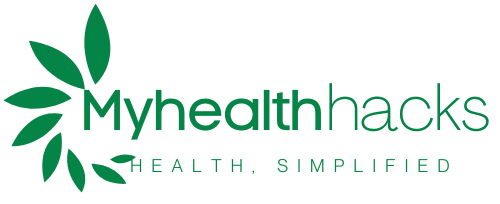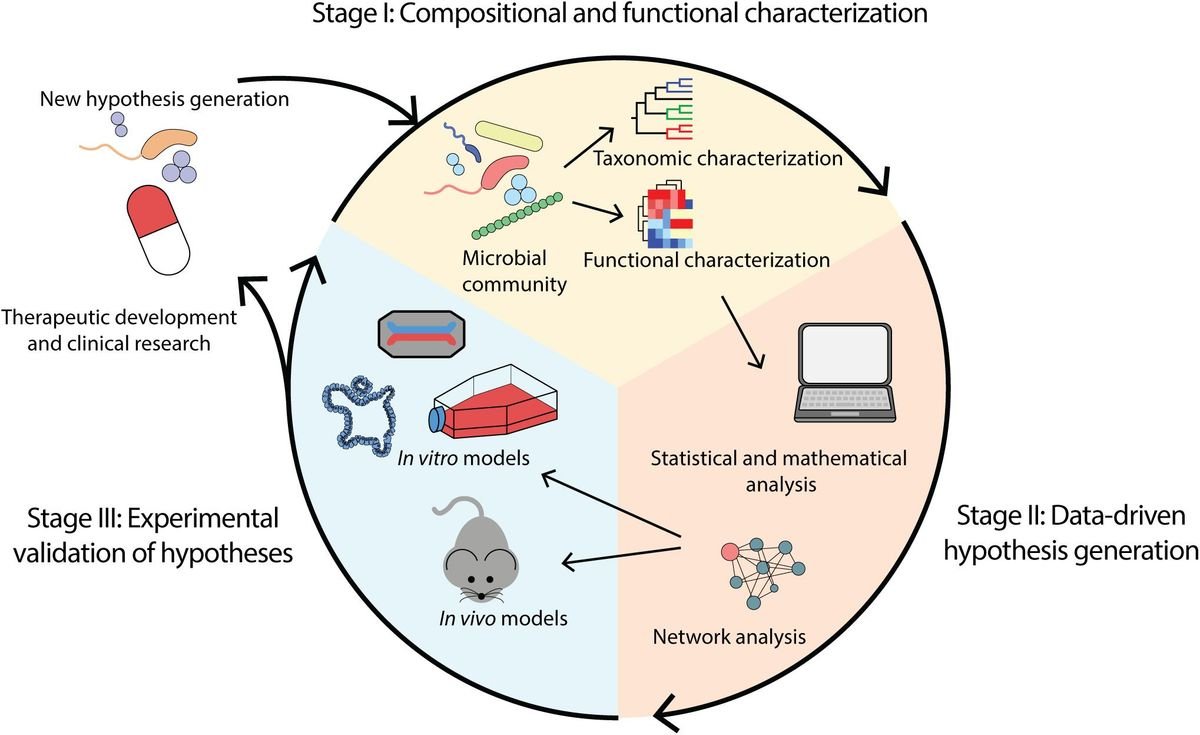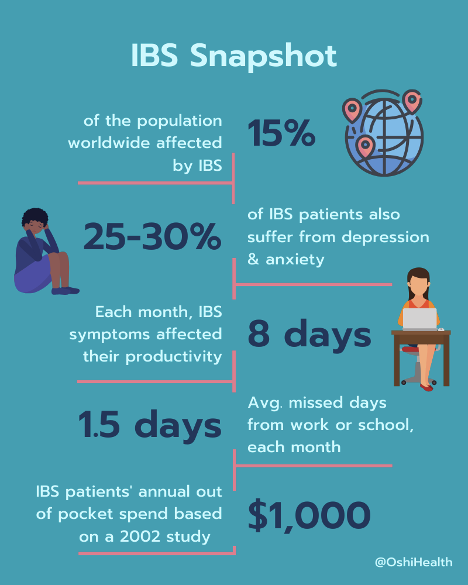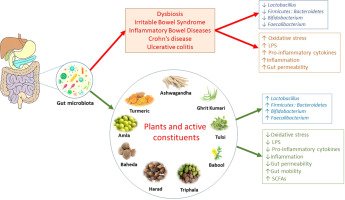Concise Summary
The rise of probiotics, prebiotics, and synbiotics is reshaping digestive wellness in the United States. Probiotics restore gut flora, prebiotics fuel beneficial microbes, and synbiotics combine both for optimal gut balance. From yogurts and kombucha to prebiotic sodas and advanced supplements, Americans are embracing these gut-health solutions to reduce bloating, improve immunity, and support long-term well-being.
Introduction: Why Gut Health Is America’s New Obsession
Gut health is no longer a niche wellness trend—it’s a mainstream movement in the U.S. According to the National Institutes of Health, nearly 70 million Americans suffer from digestive diseases annually. Even those without medical diagnoses report common issues like bloating, constipation, and indigestion.
This surge in awareness has pushed probiotics, prebiotics, and synbiotics into the spotlight. Supermarket shelves are now lined with kombucha, Greek yogurt, fiber-enriched snacks, and advanced gut-health supplements. Celebrities and health influencers openly promote these products, while scientific research continues to highlight their benefits for digestion, immunity, and even mental health.
But what exactly are probiotics, prebiotics, and synbiotics? And why are they becoming household names across America?
Understanding the Basics: Probiotics, Prebiotics, and Synbiotics
- Probiotics: Live beneficial bacteria (e.g., Lactobacillus, Bifidobacterium) that help restore balance to the gut microbiome. Found in yogurt, kefir, kombucha, and supplements.
- Prebiotics: Non-digestible fibers that “feed” probiotics and stimulate the growth of good bacteria. Common sources include garlic, onions, bananas, oats, and chicory root.
- Synbiotics: A combination of probiotics and prebiotics, designed to ensure beneficial bacteria survive in the gut and thrive long-term. Available mainly as supplements but increasingly in fortified foods.
Simple Analogy: Imagine your gut as a garden. Probiotics are the plants, prebiotics are the fertilizer, and synbiotics are a complete gardening kit that ensures growth and balance.
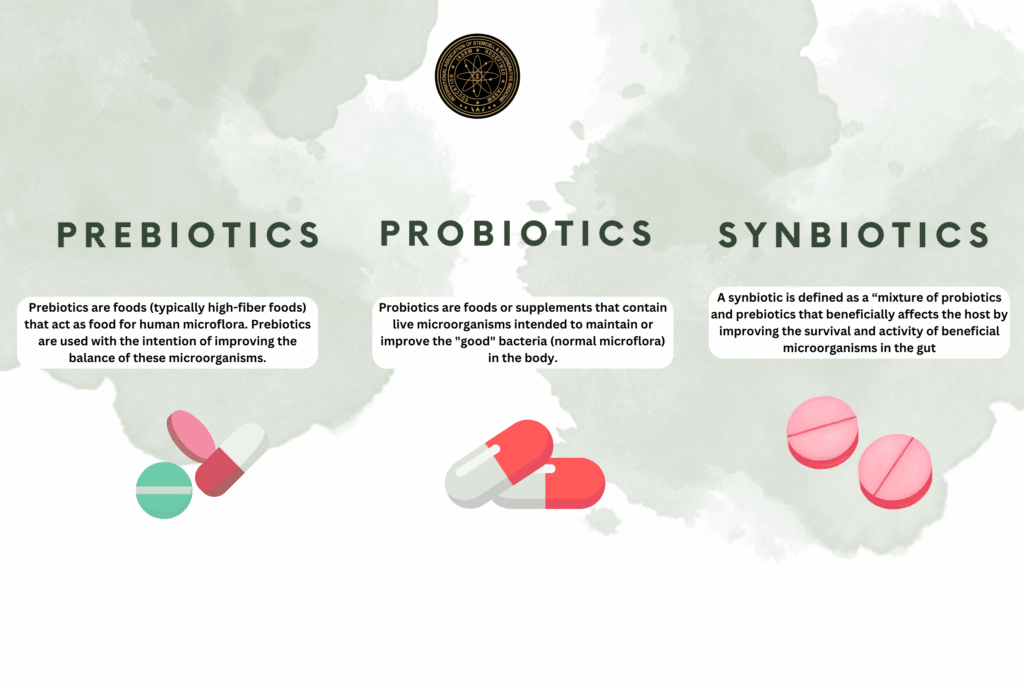
Why Are Americans Turning to These Gut-Health Solutions?
The American lifestyle often includes processed foods, irregular sleep, high stress, and frequent antibiotic use—all of which disrupt gut flora. This has created massive consumer demand for gut-health products.
Key Drivers of U.S. Market Growth
- Rising digestive health concerns (IBS, GERD, food intolerances).
- Gut-brain axis awareness: Studies link gut bacteria to mood and mental health.
- Holistic wellness culture: Consumers prefer natural remedies over medications.
- Celebrity & influencer endorsements: Driving mainstream adoption of kombucha, probiotic sodas, and fiber snacks.
Real-Life Example: A 29-year-old tech worker in Austin replaced her daily soda with Olipop (a prebiotic soda) after struggling with bloating. Within weeks, she reported lighter digestion and better energy. Her story echoes thousands of Americans shifting away from sugary sodas to functional beverages.
Probiotics in America: From Yogurt Cups to High-Tech Supplements
Probiotics were once limited to specialty health stores. Today, they are everywhere—from dairy aisles to Amazon subscriptions.
Popular Probiotic Foods in the U.S.
- Yogurts with live cultures (Chobani, Siggi’s).
- Kefir drinks (Lifeway).
- Kombucha brands (GT’s Kombucha, Health-Ade).
- Fermented foods (kimchi, sauerkraut, miso).
Scientific Backing: A 2022 study in the Journal of Gastroenterology found that probiotics reduced IBS symptoms in 57% of participants, highlighting their clinical potential.
Prebiotics: Feeding the Good Bacteria
Unlike probiotics, prebiotics are not live bacteria—they are the fibers that nourish good bacteria. Americans are discovering them in both whole foods and trendy drinks.
Examples of Prebiotic Sources
- Natural foods: onions, garlic, leeks, asparagus, bananas, oats.
- Beverages: Olipop, Poppi (sodas infused with chicory root fiber).
- Supplements: Inulin or FOS powders.
Consumer Trend: According to Mintel, sales of prebiotic sodas in the U.S. increased 40% in 2023, driven by younger consumers seeking soda alternatives.
Synbiotics: The Next Frontier in Gut Health
Synbiotics combine probiotics and prebiotics in one product, ensuring beneficial bacteria both reach the gut alive and thrive there.
- Supplements: Seed, Align, and Garden of Life dominate the U.S. synbiotic market.
- Functional Foods: Companies are beginning to launch synbiotic yogurts and snack bars.
- Clinical Edge: Synbiotics are especially promising for people with chronic digestive issues, as they improve survival rates of probiotics.
Future Outlook: Analysts project synbiotics will lead the next wave of innovation in the gut-health market, with U.S. sales expected to surpass $10 billion by 2030.
How Do These Products Actually Work in the Body?
- Probiotics: Restore balance in the gut by adding beneficial bacteria.
- Prebiotics: Provide the food source that helps those bacteria thrive.
- Synbiotics: Deliver both simultaneously, ensuring stronger and longer-lasting gut health effects.
Real-Life Case: A Chicago-based athlete combined probiotic yogurt with high-prebiotic fiber snacks. She reported fewer digestive upsets during marathon training, crediting the combo as a “performance edge.”
Practical Advice: How to Add Them Into Your Daily Routine
- Start your day with a probiotic-rich yogurt or kefir.
- Swap sugary sodas for prebiotic sparkling beverages.
- Add garlic, onions, or oats to meals for natural prebiotics.
- Consider a synbiotic supplement if you want maximum gut support.
- Introduce new products gradually to avoid bloating or discomfort.
Challenges in the U.S. Gut-Health Market
While the rise of probiotics, prebiotics, and synbiotics is promising, challenges remain.
- Regulation gaps: The FDA does not strictly regulate probiotic claims.
- Marketing hype: Some products exaggerate benefits or mask sugar with “gut health” branding.
- Consumer confusion: Many Americans cannot clearly differentiate probiotics from prebiotics.
- Cost barriers: Functional beverages and supplements are often more expensive than traditional options.
10 Detailed FAQs
1. What are the best probiotic foods for daily use in America?
The most accessible probiotic foods are yogurts with live cultures, kefir, sauerkraut, kimchi, and kombucha. These are available at most U.S. supermarkets. For maximum benefit, choose products with verified CFU counts and low added sugar. Many Americans find kefir particularly effective because it contains more diverse probiotic strains than regular yogurt.
2. Are prebiotic sodas really good for gut health?
Prebiotic sodas like Olipop and Poppi contain chicory root fiber, which feeds beneficial gut bacteria. They also have less sugar than traditional sodas, making them a healthier alternative. However, they should complement a diet that includes natural prebiotic foods like oats, bananas, and garlic rather than serving as the sole fiber source.
3. How do synbiotics differ from probiotics alone?
Synbiotics combine probiotics with prebiotics in a single formula. This ensures that the beneficial bacteria survive and thrive in the gut, making them more effective than probiotics alone. Synbiotics are particularly useful for people dealing with chronic digestive issues, such as IBS, where microbiome balance is harder to maintain.
4. How quickly can probiotics improve digestion?
Results vary, but some people notice reduced bloating or improved bowel movements within a few days of starting probiotics. Clinical studies suggest meaningful microbiome changes may take 4–6 weeks of consistent use. Patience is key—probiotics work best as part of a long-term routine rather than a quick fix.
5. Can children safely consume probiotics and prebiotics?
Yes, but choices should be age-appropriate. Yogurt with live cultures and bananas are safe for most children. Pediatricians often recommend avoiding heavily processed probiotic drinks with high sugar. Supplements should only be given under medical supervision. In general, food-based sources are the safest entry point for kids.
6. Do probiotics and prebiotics boost immunity?
Yes. About 70% of the immune system is located in the gut, and balanced microbiota strengthen immune defenses. Probiotics and prebiotics help reduce inflammation, enhance nutrient absorption, and support antibody production. Many Americans turn to gut-health products during flu season to maintain resilience.
7. Are there risks in taking too many probiotics?
For most healthy people, probiotics are safe. However, excessive intake can lead to temporary bloating, gas, or diarrhea. Those with compromised immune systems should consult a doctor before starting probiotics. Moderation and gradual introduction into the diet are the safest strategies.
8. Which U.S. brands are most trusted for probiotics and synbiotics?
Trusted brands include Chobani, Siggi’s, Lifeway, GT’s Living Foods for foods and beverages, and Seed, Align, Garden of Life for supplements. These companies are known for transparency, clinical testing, and quality assurance—key factors when choosing gut-health products.
9. Can probiotics help with mental health?
Emerging research on the gut-brain axis suggests that probiotics may improve mood and reduce anxiety by supporting serotonin production in the gut. While not a replacement for therapy or medication, probiotics can complement mental health care. This link explains why many U.S. consumers view gut-health products as holistic wellness tools.
10. What is the future of probiotics, prebiotics, and synbiotics in America?
The future is moving toward personalized gut health. At-home microbiome testing kits are already helping consumers choose tailored probiotic and synbiotic solutions. Analysts predict that by 2030, the U.S. gut-health market will exceed $25 billion, with synbiotics leading innovation. Expect more plant-based, sustainable, and AI-personalized options in the near future.
Key Takeaways for U.S. Consumers
- Gut health is now central to American wellness.
- Probiotics add good bacteria, prebiotics feed them, synbiotics combine both.
- Yogurt, kefir, kombucha, and prebiotic sodas are popular entry points.
- Synbiotics represent the future of digestive health innovation.
- Always read labels, check for sugar content, and choose clinically backed products.
Conclusion: From Trend to Lifestyle Movement
The rise of probiotics, prebiotics, and synbiotics reflects a deeper cultural shift in America. Gut health is no longer just about avoiding discomfort—it’s about achieving whole-body wellness. From kombucha in New York cafés to synbiotic supplements in California pharmacies, digestive health products are becoming part of daily life. The future promises even more personalized, effective, and accessible gut-health solutions.
Read This Also : https://myhealthhacks.us/is-gut-healing-just-a-buzzword-a-critique-of-viral-diet-trends-2025-review/
